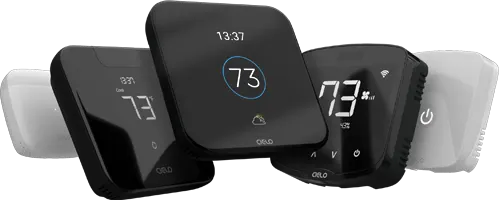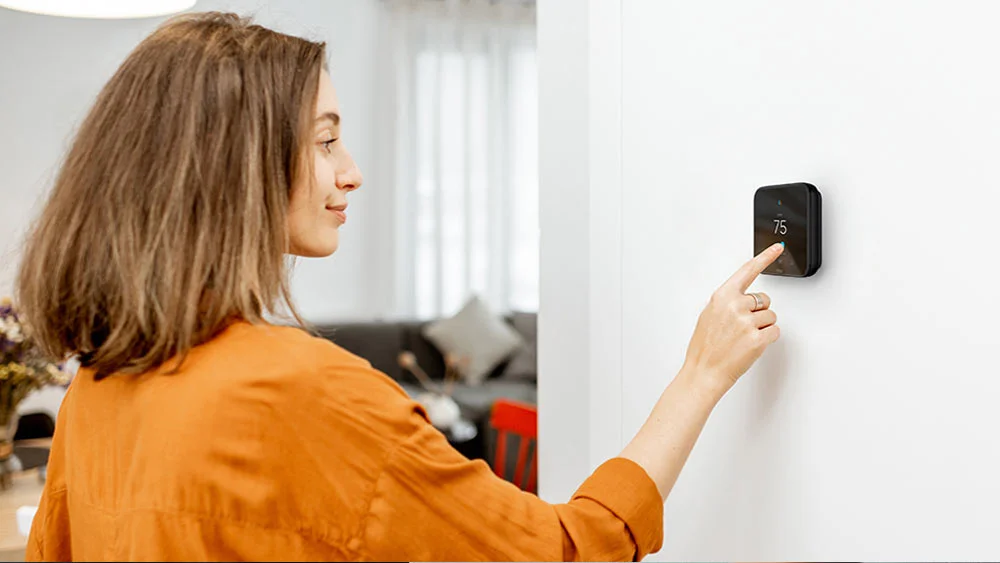
Key Takeaways
- An air conditioner cools your home by using a refrigerant to absorb indoor heat and then expel it outside.
- ACs also lower humidity by removing moisture from warm air for added comfort.
- Air conditioners don’t pull in fresh air from outside; they recycle the air inside your home.
On a hot summer day, coming back from a long day out at work, all you want is to sit down and relax in a cool and comfortable room. All thanks to air conditioners for making it possible to introduce cool air into your room to enjoy a pleasant atmosphere when temperatures are too hot outside.
According to the US Department of Energy, about three-fourths of all US homes have an air conditioner. This proves that an air conditioner has become an integral part of our lives (be it home, office, malls, etc.) but do we really know how does an air conditioner work? While learning about the working of your AC might sound irrelevant, basic knowledge might come in handy when it malfunctions and needs a quick fix.
Let us take a moment, delve deep into understanding the functioning of an air conditioner, and find out the parts and components that make up the air conditioning system.
Parts of an Air Conditioner

An air conditioner consists of multiple components, each working in sync to introduce cool air into your room. Let’s take a quick look at each of them individually and understand their function.
Refrigerant
The refrigerant is the working fluid of an air conditioner. It removes heat from the indoor air during summers and heats it up in the winters.
Refrigerants that are commonly used in the industry right now are R-22 and R-410A. This class of refrigerants provides higher operating efficiency and reduced greenhouse emissions. An older class of refrigerants, known as CFCs and HCFCs, was environmentally damaging and replaced according to the Montreal Protocol.
Evaporator Coil
The evaporator is the cooling part of an air conditioner. It throws cool air into the room, using a blower fan located right beside it. Refrigerant, which is a cooling agent, at this point flows through the coils in the evaporator, making them cold. A fan located behind the evaporator blows air from your room over the coils, cooling it down and introducing it back into your room.
Compressor
This is the most important part of an air conditioner. A compressor does exactly what the name suggests. It compresses the refrigerant flowing through your air conditioning system.
But how does an AC compressor work?
After passing through the evaporator, the refrigerant becomes a hot gas after absorbing the heat from your room. It is then compressed to convert it to a hot liquid. As the process flows, the refrigerant is transformed into a gas again and passed through the compressor to complete the cycle.
Condenser Coil
The condenser is much like an evaporator but in reverse. It absorbs heat from the hot refrigerant and ejects it outside into the outdoor air. A fan located behind the condenser coils blows air over them and cools the refrigerant down for the next cycle. The condenser coil is most commonly known as the outdoor unit.
Your best choice to make any mini-split, window,
or portable AC smart. Enhance your comfort and savings.

How Does an Air Conditioner Work Step by Step?

Now that you have basic knowledge about different components of your aircon, let’s look at how these parts work in sync and exactly how does an AC work?
Let us start with the refrigerant. It is a chemical substance used to carry heat from the indoors and eject it outdoors. It absorbs heat when it is a cool gas. The refrigerant flows through a network of coils and copper pipes, which are connected with the evaporator, condenser, and compressor.
- The cycle starts with the evaporator (indoor unit) blowing the indoor air over the cold evaporator coils. The air exchanges heat with the coils, lowers its temperature, and is then blown back into the room by the fan in the indoor unit.
- Refrigerant is now sent to the compressor. It is compressed and converted into a high-temperature, high-pressure liquid.
- The high-pressure fluid flows to the condenser coils, where it is cooled down by fans blowing over the condenser coils. Heat is exchanged between the hot refrigerant and the comparatively cooler outside air. Opposite to the evaporator section in step 1, the refrigerant now loses heat instead of the air as it is expelled into the outside environment.
- The liquid refrigerant is now passed through a special nozzle, called an expansion valve, which expands the refrigerant so quickly that it converts from a high-temperature liquid into a cool gas.
- The refrigerant is now sent to the evaporator coils, and the cycle starts again.
Do Air Conditioners Take in Air From Outside?
In the strictest sense, an air conditioner does not take in air from the outside. All it does is take in the hot air already present inside your room and cool it down. This conditioned air is then reintroduced inside your room to maintain your set temperature. In other words, the air is recycled within the room, and there is no fresh air being introduced.
This is similar to your car’s air conditioner. When you open the recycling vents in the car AC, air from outside enters your car’s interior. Even though it is fresh air, the air conditioner does have to work harder to keep it at the desired lower temperature. Moreover, the outside air also has to be filtered. If you close the recycling vent, the already present air in the car will be recycled. This will reduce the burden on your air conditioning system, but there won’t be any fresh air.
When a ventilation system is installed, fresh air can be introduced into your room after filtration and cooling. This is most common in commercial and industrial ducted HVAC systems, where a constant stream of fresh air is greatly desired.
Humidity Control in Air Conditioners
Even though the primary function of an air conditioner these days is to regulate temperature, their original intended function was much different. In the early days, they were used to regulate humidity rather than temperature.
Humidity and temperature have a very close relationship. As a general rule, the higher the temperature, the higher the humidity, but that isn’t always the case.
Logically, with a decrease in temperature, the humidity levels of the room will also go down. If you are feeling swampy and damp, lowering the temperature will make you feel much better. This is because by reducing the temperature, humidity reduces in the room as well. As the air moves in your air conditioner, the moisture in the air is captured by the evaporator coils and drips down to a drain pan. This makes your air cooler as well as drier.
This way, you can also maintain perfect humidity levels with an air conditioner.
Difference Between the Working of Central and Ductless Air Conditioners

Although the air conditioning process for all air conditioners is the same as discussed above, there are a few differences in the two main categories of air conditioning, ductless (mini-split, portable or window ACs) and ducted (central AC).
How Does Central Air Conditioning Work?
In such a system, also called a ducted air conditioning system, the air is transported to your rooms through a system of ducts and vents connected to the evaporator located in a concealed location, such as a basement. An air handler unit pushes the air over the evaporator coils and distributes it across the house.
With ducted systems, you have to be careful because they heat or cool the whole home at once. To prevent this, you can create different zones inside your home. This can be done by using smart thermostats, dampers, and vents.
Equip your HVAC system with smart features and achieve the perfect balance between comfort & savings.
Learn more
How Does Ductless Air Conditioning Work?
On the other hand, a ductless air conditioner needs no ducts, vents, or air handler units. These units can be placed directly in the room that needs to be cooled and connected to the outdoor unit (condenser), often placed on the other side of the wall. Be mindful. A ductless unit does not ventilate, meaning it does not use air from the outside to condition your room.
Now that you have an idea about the functioning of an air conditioner, you can put it to good use. Using a smart thermostat for ductless systems, you can automate your air conditioning and reap even more benefits without worrying about maintaining your ideal room temperature anymore.
Your best choice to make any mini-split, window,
or portable AC smart. Enhance your comfort and savings.

After you have bought your air conditioner, be sure to take good care of it. You have to keep on top of the air conditioner maintenance so that your air conditioner keeps on running smoothly and efficiently for years to come.








